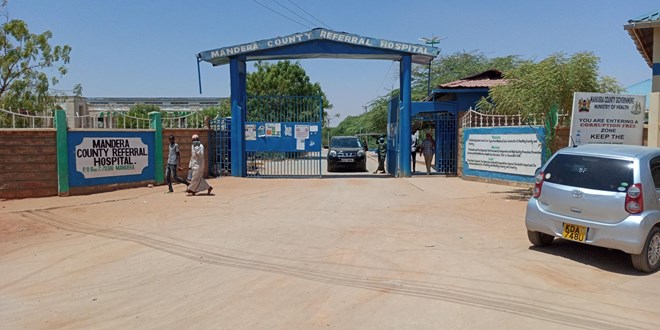
Saturday February 27, 2021

At least 19 cases of the deadly parasitic disease kala-azar have been reported in Mandera, with the patients being treated at the Wajir County Referral Hospital.
The disease needs special treatment centres found in the neighbouring Wajir or Marsabit counties.
Mandera Public Health Chief Officer Rahma Abdullahi said the patients were referred to Wajir as Mandera cannot treat the disease.
"We have reported cases of kala-azar in Kutulo Sub county and about 16 infected persons have been taken to Wajir for treatment," she said.
Two more cases from Mandera North Sub County are being managed at Mandera County and Referral Hospital.
"We are engaging the Vector Borne Disease Control Unit at the Ministry of Health in Nairobi to help us set up treatment centres in Mandera before the situation worsens," she added.
Mandera is negotiating for the establishment of a kala-azar treatment centre at Elwak in Mandera South and the county referral hospital in Mandera East.
The county chief officer said the situation at Kutulo was endemic and those cases can be managed at Elwak, which is closer than Wajir.
"The drought in the area is leading to this situation after the sandflies multiplied and since livestock migrated, the flies now bite people, infecting them," she said.
Sporadic cases of kala-azar have been reported in Mandera North and Mandera West Sub counties.
According to the health administrator, anthills in many parts of Mandera are harbouring the sandflies that transmit the virus."Kala-azar is a parasitic disease caused by the Leishmania parasite that typically lives in infected sandflies and one can contract the disease from a bite of the insect," said Mr Mohamed Adawa, the County Deputy Director of Health Services.
The sandflies that carry the parasite typically reside in tropical and subtropical environments and at the moment, Mandera is dry.
Ms Abdullahi said signs of the disease were first reported in the county in January.
A patient can show signs two to eight months after being bitten by a sand fly.
Symptoms include general weakness, bleeding, weight loss, fever, enlarged spleen and liver and decreased production of blood cells.
Swollen lymph nodes are also common among the victims of the sand fly bite.